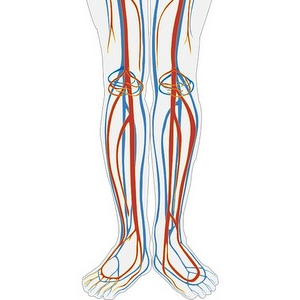A unique method of treating ischemia and other diseases associated with vascular pathologies was created by scientists of the Samara State Medical University and the Samara National Research University named after Academician S.P. Korolev. According to the authors, the technique allows not only to improve the condition of the vessels, but even to form new ones instead of the affected vessels. The results are published in the collection of papers of the International Biomedical Engineering Federation.
Coronary artery disease of the lower extremities, especially common among older people, is usually accompanied by severe pain. In most cases, its treatment is possible only through complex surgical intervention.
Since the late 80s of XX century, scientists at Samara State Medical University have been developing the idea of treatment with artificial gravity created in a short-radius centrifuge. Inside it, the patient is fixed in a lying position so that the axis of rotation of the device is located in the head area. Under the influence of centrifugal forces, blood rushes to the legs, saturating not only the main channel of the vessel, but also its branches - the so-called collaterals.
Regular “training” of collaterals in a centrifuge can lead not only to their expansion, which compensates for the narrowing of the main channel, but, as scientists explained, even to the formation of a new healthy vessel. According to them, to date, more than 3.5 thousand successful trials have been carried out.
Specialists of Samara State Medical University and Samara National Research University managed to improve the method by developing and integrating into the centrifuge a system for wireless recording of biomedical signals of the body. According to scientists, this provides an individual approach to each patient, which significantly increases the effectiveness of the procedures.
“Multiparameter assessment of the state of the vascular system occurs due to the reading of electrocardiographic and photoplethysmographic signals. Continuous monitoring allows you to set the optimal centrifuge speed,” explained Sergei Akulov, associate professor of laser and biotechnological systems at the Samara University.
According to scientists, the approach is extremely useful not only in the treatment of vascular diseases, but also in traumatology and orthopedics, as well as part of a comprehensive treatment of hypertension, erectile dysfunction, inflammation of the uterus and a number of other pathologies.
“The course of treatment consists of 10-15 sessions, the duration of the procedure is from seven to 15 minutes. The positive effect lasts up to six months, then it can be repeated. The method has a number of contraindications, but the individual setting of the procedure allows you to treat citizens even ninety years of age – we have such an experience,” said Professor Igor Makarov, head of the Surgical Diseases Department No. 1 at Samara State Medical University.
Short-radius centrifuges are used in large research centers for training astronauts, but, as the scientists at Samara State Medical University explained, they can be installed in any medical institution - this requires only a room three to four meters in diameter.
The Gravity Therapy Center has been operating in the Clinics of Samara State Medical University since 2003. In 2006 a team of scientists led by Academician of the Russian Academy of Sciences Gennady Kotelnikov received an award from the Russian Federation Government for the gravitational therapy creation, recognized as a new direction in medicine.
The research team plans to further increase the effectiveness of therapy due to the accumulation and refinement of data for different age groups of patients.
